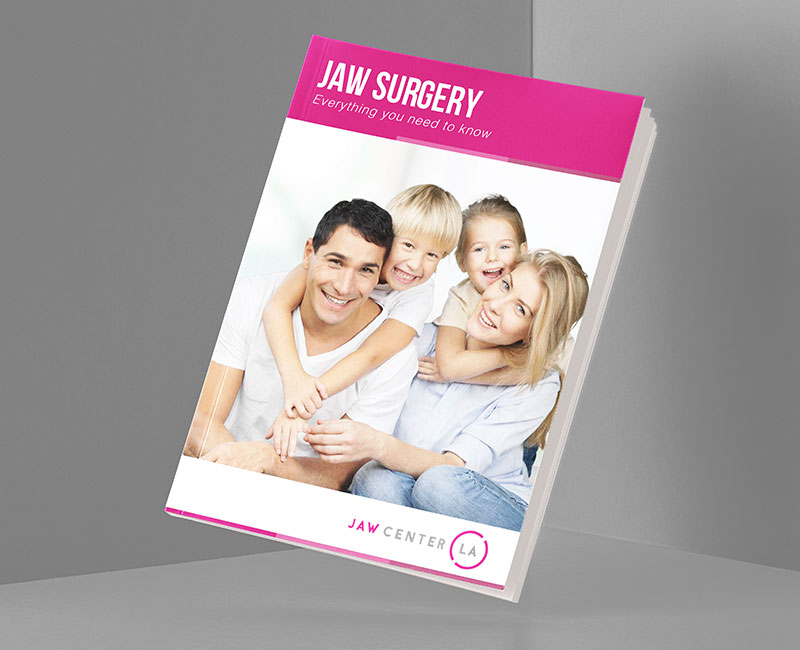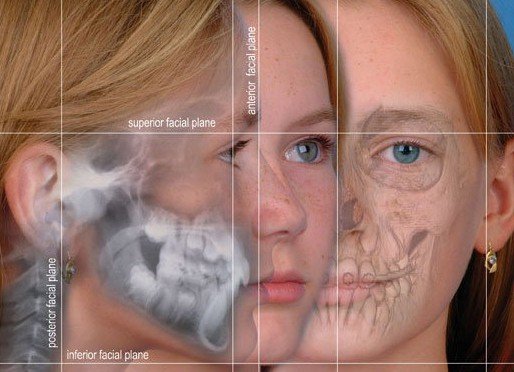
Choosing Between Jaw Surgery or Orthodontics?
Traditional orthodontic treatments such as braces or Invisalign are commonly used to straighten crooked teeth and relieve dental crowding. Orthodontics generally focuses on the appearance of your teeth with the aim of giving you a straighter smile.
But have you thought about why you might have crowded teeth, a bad bite, or an uneven smile? You may have been told modern humans have too many teeth, or the teeth you inherited are too big. The answer, however, comes down to imbalances in the size and position of your jaws.
Traditional orthodontics commonly relies on removing teeth to “camouflage” the true cause of dental crowding. Or it might try to mask jaw imbalances by holding back normal facial growth or training you to hold your jaw forward.
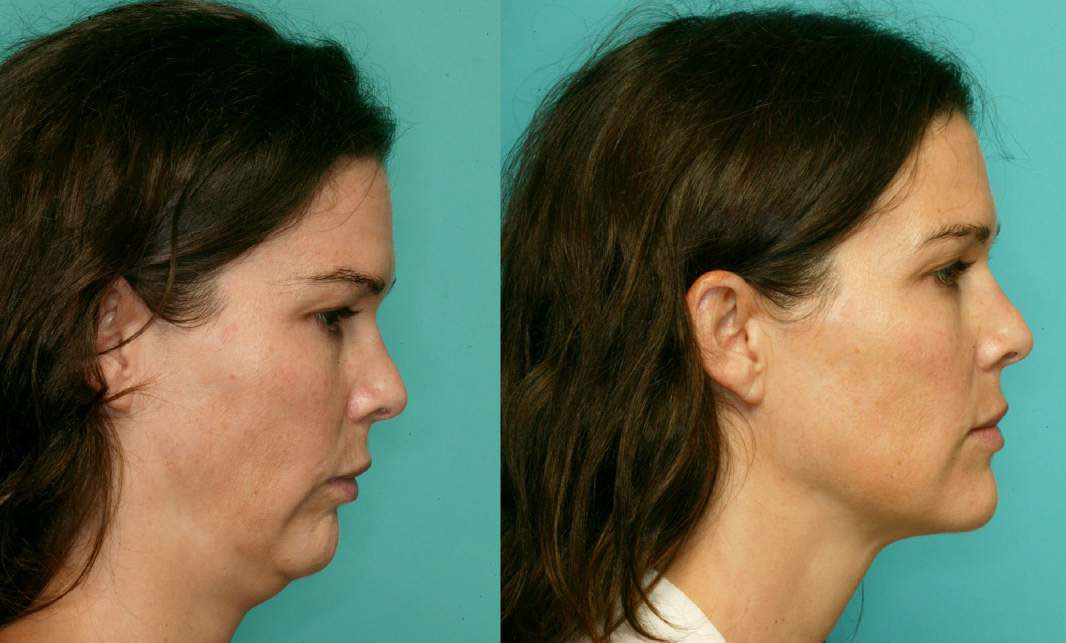
Orthognathic Jaw Surgery can have significant positive effects on your life. While the appearance of your face and smile maybe enhanced through treatment, the objective of Jaw Surgery is to improve the structure, function, health, esthetics, and proportions of the face and jaws in addition to enhancing the smile.
If the jaws are imbalanced, traditional orthodontics may not address the cause of crooked teeth, dental crowding, and a bad bite. In fact, traditional orthodontics can cause root resorption and bone loss that is difficult to resolve.
For some people, traditional orthodontics might be an appropriate, cost-effective treatment option. But before you make a choice, you need to ask the question…. is this treatment disguising more significant issues that should be addressed medically?
Medical conditions associated with jaw development are often ignored. Imbalances in jaw growth can then result in breathing difficulties, snoring, sleep apnea, and TMJ dysfunction (temporomandibular joint dysfunction).
Left untreated, these medical conditions can lead to jaw arthritis, dental wear and tear, and periodontal disease. An imbalance in the jaws can also impact the airway resulting in snoring that adversely impacts your health and can cause sleep apnea. Obstructive sleep apnea results in a lack of oxygen while sleeping and can cause memory loss, despondency, depression, hypertension, obesity, diabetes, heart disease, stroke, and early death. Fortunately, effective treatments are available. Specialists at Jaw Surgery LA, Sinus Center LA and Orthodontic Center LA work together to establish an optimal diagnosis and offer surgical and non-surgical treatment options.
JAW SURGERY realigns the JAWS and TEETH to improve function, AIRWAY, and FACIAL AESTHETICS.
Jaw surgery is not just about enhancing your looks. It’s also about improving your airway to make breathing easier especially while sleeping. Sufficient oxygen uptaken while sleeping is vital for deep restful sleep and rejuvenation.
Jaw surgery, often combined with the ideal orthodontic treatments, may be the best solution for adults in correcting jaw imbalances. This ebook will help you decide whether jaw surgery is an option for you.
We fully understand that deciding on surgery is a big step, and it’s completely natural to have concerns and questions. In your consultation, our Orthodontic Center LA Surgical Doctor will talk through all your issues to help you make a decision that’s right for you.
Deciding on Jaw Surgery?
View your images and treatment options in 3-D and consult in with the appropriate specialists, including an ENT (Ears, Nose, Throat and Sinus Specialist), an Orthodontist, and a Surgeon, double board-certified in Maxillo-facial and Plastic surgery to help make a decision that’s right for you.
What is Jaw Surgery?

Can Jaw Surgery allow your teeth to straighten without the need to remove teeth?
Jaw surgery can align your jaws to their ideal position and natural proportions of your face. The purpose of jaw surgery is to enhance your chewing, speaking, breathing and overall health as well as your facial proportion, balance, and smile for those interested in esthetic improvements. If your teeth are healthy, it is usually not necessary to remove them in conjunction with jaw surgery. Wisdom teeth may be an exception if impacted.
Corrective jaw surgery is considered a functional medical procedure. It is not only performed to enhance facial aesthetics and thus is not considered to be only a “cosmetic surgery” procedure.
Obstructive Sleep Apnea
Jaw surgery can be specifically designed to open up the airway behind the tongue, to relieve airway obstruction and improve breathing, especially while sleeping. This can resolve snoring and sleep-disordered breathing, and the risk of developing sleep apnea.
Another aim of treatment is to create space for teeth to uncrowd naturally or with the assistance of gentle orthodontic treatments. The newly established bite at the end of treatment helps balance your chewing and eliminate current or future jaw joint problems.
Jaw surgery is an art and a science.
Visualizing your 3-D images with the specialists at Jaw Surgery LA using proprietary technology allows you to see your options and fully understand the risks, options, alternatives, and limitations and to make an informed decision based upon your unique anatomy, physiology, health, biochemistry, and motivation.
Why Choose Jaw Surgery?
Do you struggle unnecessarily with:
- Difficulty chewing
- An uncomfortable bite
- Affected speech
- Jaw joint problems (TMJ dysfunction)
- Headaches
- Facial pain
- Difficulty closing your mouth and muscle strain
- A receding or protruding jaw
- A gummy smile
- An open bite
- Open mouth breathing or bad breath
- A closed bite
- A cross bite and narrow smile
- Neck postural problems
- Obstructive Sleep Apnea
- Tiredness in the day with lack of energy
- Despondency/Depression, memory loss.
- Snoring at night
- Chronic nasal congestion
Fortunately, there are very effective treatments for all of these. Many of the most effective treatment includes a multi-disciplinary approach.
Optimal Health
More than anything, all people want to be happy. One essential ingredient of happiness is optimal health.
Specialists at Jaw Surgery LA are highly attuned to helping you achieve optimal health. Above all else, optimal health allows one to live happy and fulfilled lives. Without optimal health, life is difficult.
Optimal health can be best achieved with a comprehensive diagnosis. When you visit Jaw Surgery Los Angeles, we will help you achieve optimal health by including treatment at our center in conjunction with doctors you may be working with. We also have a rich network of specialists in health care and dentistry.
Jaw surgery is only one modality that may or may not be indicated to help you achieve optimal health, function, and aesthetics.
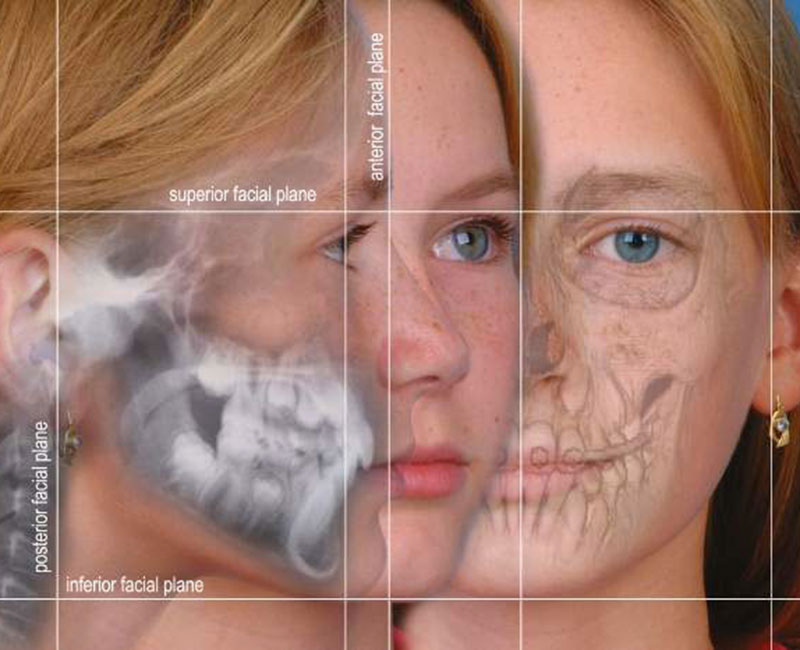
The Importance Of Airways
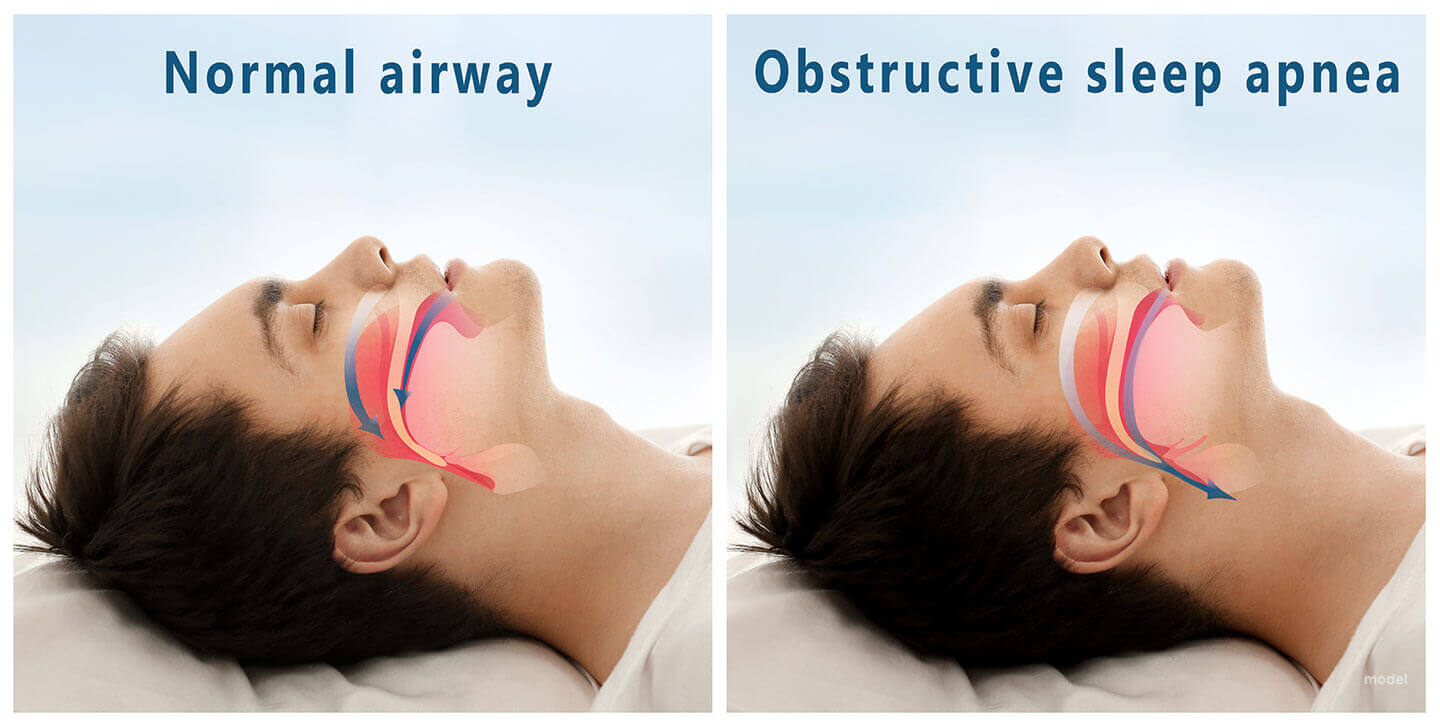
SNORING IS NOT NORMAL in Children or Adults
Correcting jaw and facial imbalances have a positive impact on our health that extends beyond esthetics. Corrective procedures improve significantly the dental/ orthodontic structural integrity and functionality of the human face. A retrusive (small or malpositioned) upper or lower jaw can cause a narrowing of our airway especially behind the tongue and soft palate.
A narrow or restricted airway can cause snoring and sleep apnea. This always adversely impacts your health and can lead to heart attack, stroke, depression, and type 2 diabetes.
Because sleep-disordered breathing affects not only older people, but growing children and teens by way of restricting airways, it must be diagnosed. Jaw Surgery LA uses proprietary imaging and tests that help diagnose airway narrowing and skeletal imbalances. The treatments available at our facilities are very effective.
Successful treatment of airway obstruction improves breathing and the quality of sleep. Better sleep enhances your health and greatly improves concentration levels during daytime performance. Optimal health and breathing helps you in sports, school, work, and every aspect of your life. Without optimal health, happiness is elusive.
Thus, planning a Jaw Surgery to correct the size and position of your jaws is imperative. An optimal airway is vital to optimal oxygen saturation while sleeping. Oxygen saturation during sleep is vital to your health. Optimizing the jaw position is one vital component to aid oxygenation.
The Jaw Surgery Process

Step 1
Initial Consultation
At your first consultation, we will broadly discuss the concept of jaw surgery with you. We will also discuss treatment options and the results you can expect from jaw surgery. We will also examine your teeth, bite, jaw, TMJ, airway, nose, sinus, airway, and stomatognathic system and answer any of your questions.
Your first consultation is a discussion of ideas, and how treatment may or may not benefit you. Your consultation can take as long as you prefer but schedule at least one hour. At that time specific individualized 3-D records are usually prescribed and taken and a follow-up comprehensive consultation is scheduled.
We can arrange a consultation for you in our office in Pacific Palisades, Los Angeles, Monday to Friday 8:30 am to 5:30 pm and weekends by appointment. Patients flying in from out of state and abroad can arrange an initial telemedicine consultation.
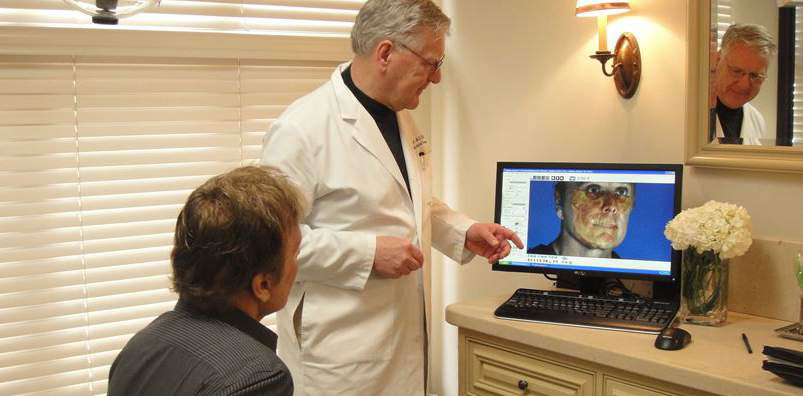
Step 2
Surgical Planning
Once you decide to proceed with exploring jaw surgery, we will provide you with a wealth of information we hope you find invaluable.
Using proprietary imaging we digitally reconstruct your jaws, teeth, airway, and facial soft and hard tissues. This is a fascinating process that is designed to help our specialists plan your individualized specific surgery.
Patients tell us they find the process most comprehensive and they learn so much. It also helps us visualize and explain the intended results and fully discuss the alternatives. The potential risks and possible benefits will also be discussed in detail. Please plan to spend plenty of time with us and bring family and trusted friends to this consultation.
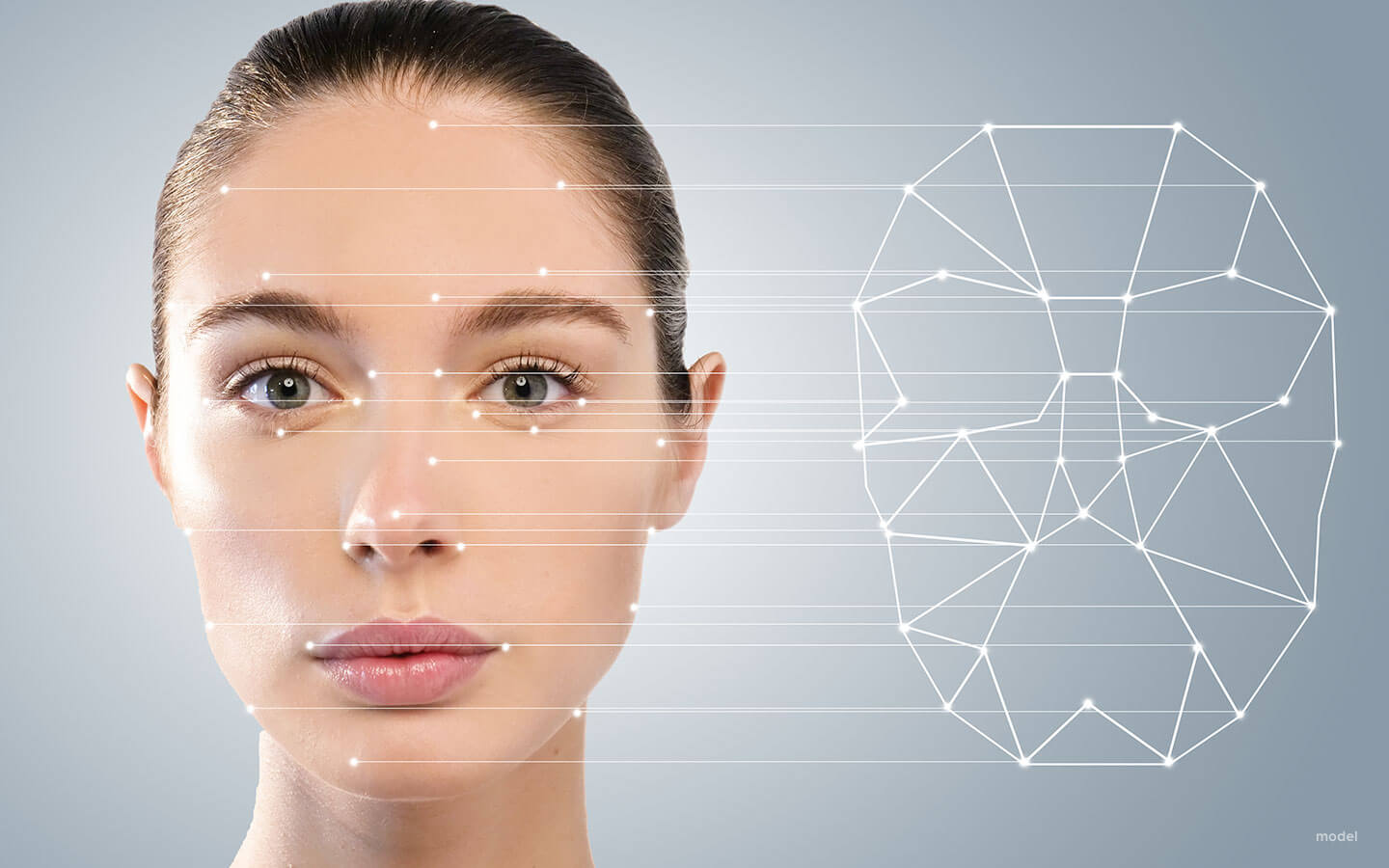
Step 3
Customized Plate Design
Once your individualized treatment plan has been formulated for optimal structure, function, overall health, and aesthetics, virtual digital surgery is performed.
This is an invaluable process whereby the surgeons at Jaw Surgery LA collaborate with all relevant allied specialists, including your orthodontist and articulate, refine and rehearse the prescribed surgery, digitally.
3-D patient-specific surgical guides and templates are then ‘printed’ that can be taken into the OR at the time of surgery to assist the surgeons at Jaw Surgery LA in performing your specific surgical procedures.
Small titanium surgical plates are also ordered to secure the maxilla (upper jaw) mandible (lower jaw) and chin during surgery. Custom jigs, surgical guides, and splints help ensure accurate incisions and placement of the maxilla, mandible, plates, and screws. Patients often ask if the very small titanium screws and plates placed during surgery can set off sensors at the airport. The answer is generally no since they are so small, analogous to dental implants, often placed for missing teeth.
Plates and screws are generally not palpable (cannot be felt) since they are small, are placed under the tissues, and placed in the bone. It is possible to remove these screws and plates months after surgery for any reason though 95% of patients do not request the removal. The removal is usually a much quicker procedure than the actual jaw surgery and can be prescribed by the surgeon in the unlikely scenario of an infection adjacent to the plates or screws. By the time the plates and screws are removed, the bone is typically remodeled and strong, whereby the plates and screws are no longer needed.
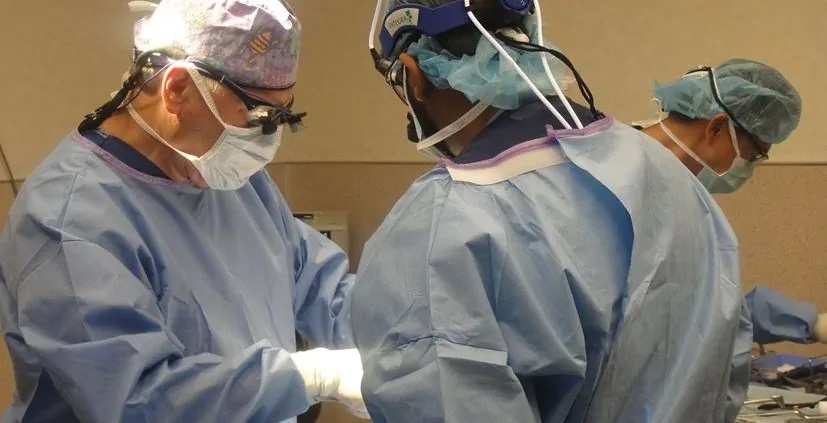
Step 4
Surgery
Your surgery will be performed in a private hospital setting or our AAAHC certified OR. Following surgery, you can stay in the hospital or at a post-surgery recovery facility for 1-3days depending upon the surgery.
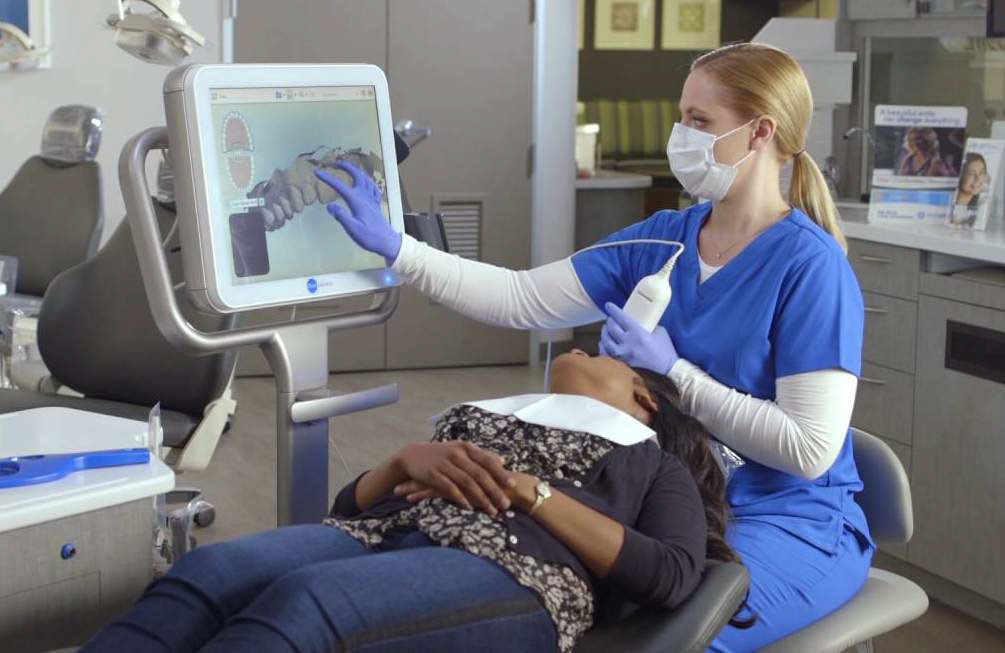
Step 5
Post-Op Monitoring
Dr. Jacobson has worked with Maxillo-facial and Plastic Surgeons for more than 35 years doing orthodontics in preparation for jaw surgeries.
During the first 10 years, he and the surgeons would recommend “wiring the jaws shut” for up to 3 weeks. Over the last 25 years and currently at Jaw Surgery LA, there is rarely a need to “wire the jaws shut”. Using a proprietary protocol developed by Dr. Schendel (Professor Emeritus Stanford University) and Dr. Jacobson, Director of Orthodontic Center LA, 98 % of patients do not need to have their jaws “wired shut”. Elastics may be placed that patients can remove, to allow them to rinse during the days following surgery, eg. with Piredex solution. This helps keep the teeth and tissues clean following surgery.
Patients flying in from out of state and abroad can often return home within 2-3 weeks depending upon the surgery. We will work with professionals in your city to complete any necessary treatment.
Types of Jaw Imbalance
The Small Lower Jaw | Mandibular Advancement

A mandibular advancement (moving the lower jaw forward) may be prescribed for a receding or weak chin and jaw. Although this may seem like a simple surgery, it is not. This surgery should be performed by a highly trained team of specialists, with extensive training and experience in both maxillo-facial and plastic surgery as well as ENT and orthodontics. A small or receding lower jaw can make the upper jaw (maxilla) and nose appear disproportionately large and procumbent ( protruding).
The correct balance and placement of the jaw is critical for optimal results. An orthodontist that has extensive experience working with patients in preparation for jaw surgery will help set the teeth into a position that will assist the jaw surgeon in obtaining the best results. The size, shape, symmetry, and position of the jaw is measured using 3D cephalometrics and the condition of the teeth, periodontium, musculature, bone, ligaments and both temporo-mandibular joints must be carefully analyzed. Often ancillary procedures are included in the surgical protocol including a chin procedure and eg. the counter-clockwise positioning of the maxilla (upper jaw) in order to obtain the best results.
A mandibular advancement, alone and in conjunction with ancilliary procedures is very effective for the treatment of obstructive sleep apnea and airway obstruction. Fortunately, at Jaw Centre LA we have a team of specialists that include a highly experienced board-certified ENT, Dr. C Phillip Amoils (ears, nose, throat, and sinus specialist), who has treated thousands of patients, to assist us in treatment planning patients with airway obstruction.
Also fortunate at Jaw Surgery LA is the onsite state of the art digital imaging that allows the team of specialists to collaborate for patients with multi-disciplinary needs. The anatomy of the jaw and face is considered as well as physiology including swallowing, tongue placement and positioning, muscle strain, nasal congestion/blockage, sinus condition, and facial and smile esthetics.
The Small Upper Jaw | Maxillary Advancement

A small upper jaw can result in dental crowding, impacted teeth (usually the canines), a narrow smile, and a narrow airway that can cause obstructive sleep apnea.
While children are growing, it is possible to significantly improve this condition and if possible, parents should consult with an experienced board-certified orthodontist as early as the 6 or 7, before all the permanent teeth appear in the mouth. Corrective interceptive procedures can often prevent and preclude the need for future surgery. Treatment at a young age can be much simpler, with shorter treatment times and much more stable than treatment that is deferred into adulthood, especially if damage to the teeth and periodontium (gums and bone) has occurred. It is never too late to help restore structure, function, and esthetics.
Fortunately, maxillary surgery (Le Forte 1 surgery) is very effective in correcting a recessive maxilla (upper jaw). The jaw can be widened very effectively and positioned into an optimal place whereby function and esthetics is greatly improved.
If the upper jaw did not develop fully, patients complaints include a smile and upper jaw that appears recessive or that they don’t see a full smile or that their teeth appear not to show fully sometimes with varying degrees of dark shadows on either side of the smile between the cheeks and the teeth (dark buccal corridors). Patients complain that they seem to be aging prematurely and look old and that their bite feels like it is collapsing or is uncomfortable. Dentists and patients complain that their teeth seem to be wearing away prematurely and that they have micro-fractures from a bad bite. (malocclusion) and sometimes need fillings for chips or cracks or sometimes even crowns or gum grafts or even root canals or implants or bridges. Most of this can be prevented. It is never too late to improve the health and the integrity of the teeth, jaws, gum tissue, bone, musculature, airway and facial and smile esthetics.
Many surgeons comment that the upper jaw surgery can be easier than lower jaw surgery and patients comment that their recovery is remarkably faster than what they expected. All surgery is complex, however, and must be planned and performed with precision by an experienced team of specialists. Fortunately, when planned precisely and performed exceptionally well, results are most rewarding and can last a lifetime.
The Front Teeth Not Touching | Anterior Open Bite
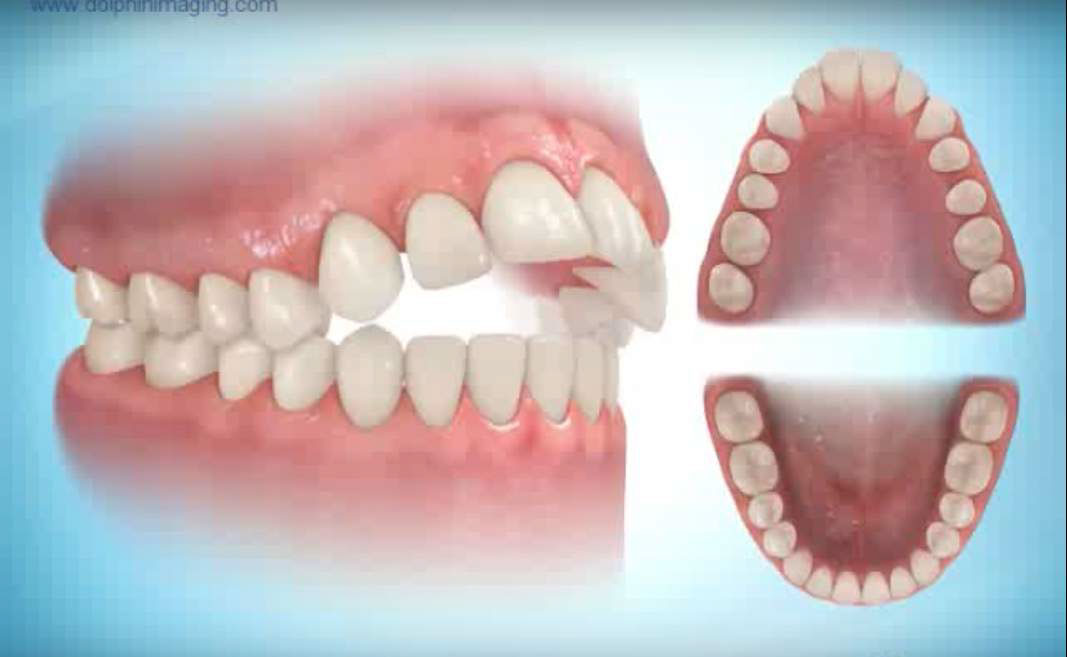
The anterior open bite is where the front teeth do not meet, making normal chewing and biting almost impossible. The way the back teeth meet makes the face appear “propped open.” The chipping and wear of these teeth increases the risk of losing them permanently during adulthood.
This is probably the most complicated treatment challenge for facial correction specialists. An anterior open bite forms by a complex interplay of abnormal growth patterns. It will have started in early infancy because of a genetically small lower jaw.
The lower jaw and tongue are almost always small, and this is currently viewed as the main cause of airway obstruction and breathing difficulties. This leads to open mouth breathing, abnormal growth of the upper jaw and development of the anterior open bite.
The Big Lower Jaw | Mandibular Hyperplasia
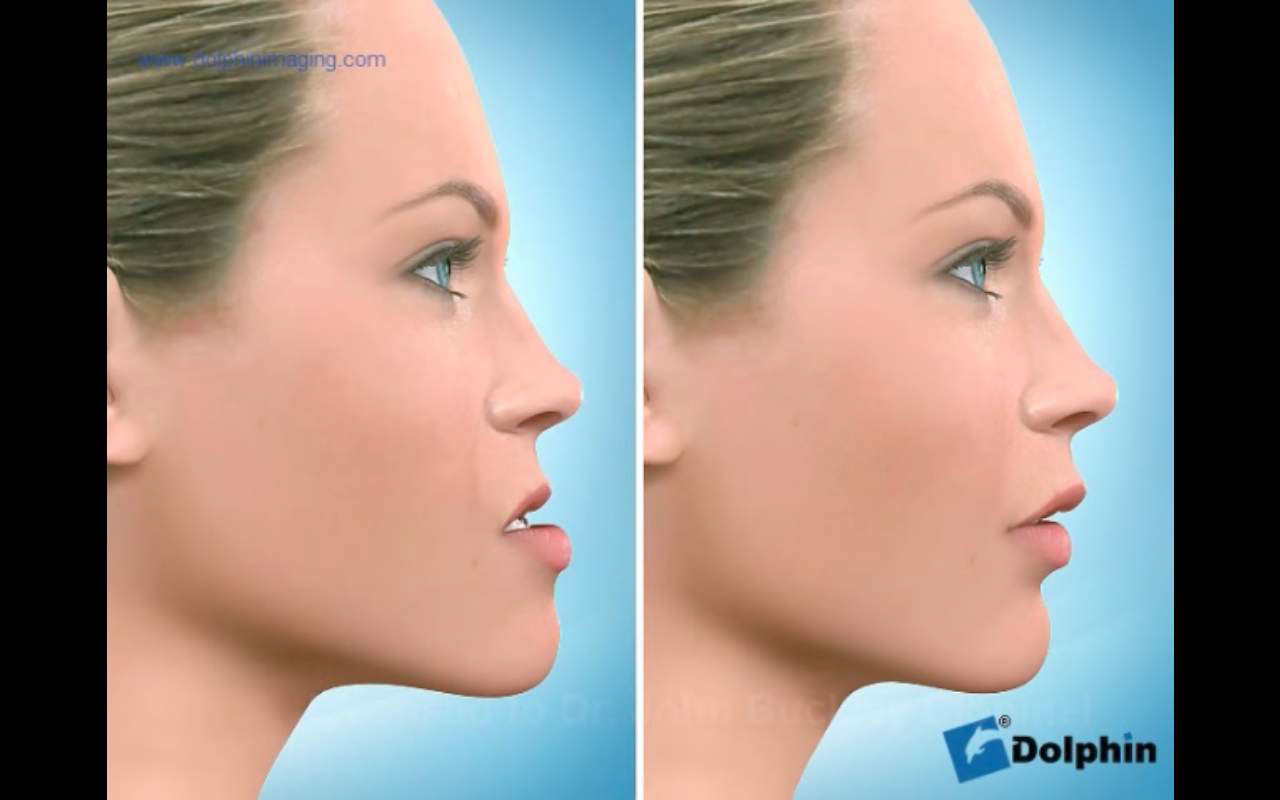
The most common cause is an upper jaw that is small relative to a normally sized lower jaw. A small upper jaw gives the illusion of a big lower jaw, and is almost always due to nasal obstruction leading to open mouth breathing.
A symmetrically big lower jaw is exceedingly rare, and occurs due to an excess of growth hormones during facial development. If treated early, through surgery, many long term bite and developmental problems can be minimized or avoided.
The Long Face & Gummy Smile | Vertical Maxillary Excess
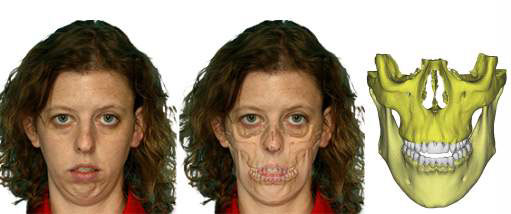
This condition arises due to extensive vertical growth of the upper jaw. The lower jaw often grows in downward fashion as a response to the long upper jaw, resulting in what can be extreme vertical heights of the face.
The most notable features of maxillary excess are a long face, a gummy smile, a narrow upper arch of teeth, and front teeth that don’t meet. Often the lips are unable to meet due to the jaws being “propped” open by the increased vertical jaw growth.
The lower jaw and tongue are almost always small, and leads to significant airway obstruction and breathing difficulties. The open mouth breathing that follows is the primary cause of the uncontrolled vertical growth of the upper jaw.
The Small Upper & Lower Jaws | Bimaxillary Retrusion
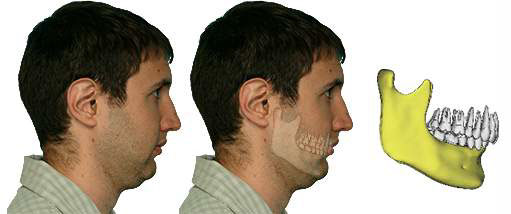
Bimaxillary retrusion is a common facial condition where both the upper and lower jaw are small. The lower third of the face appears receded, and creates the sense of small chin. The bite appears to be in a normal orthodontic relationship.
When both the upper and lower jaws are small, there is the false appearance of the nose being too large. This may inadvertently lead to a person seeking a cosmetic nose reduction (cosmetic rhinoplasty).
17 The causes for these skeletal jaw discrepancies vary. Some will be genetic, and some will be due to early childhood trauma. The major cause of bimaxillary retrusion is an inherited small lower jaw, often camouflaged by extraction-based orthodontic treatment.
Bimaxillary retrusion is the major cause for adults seeking remedial jaw surgery, to correct the many detrimental effects that can arise following camouflage orthodontics as a teenager.
The Asymmetrical Face | Facial Imbalance
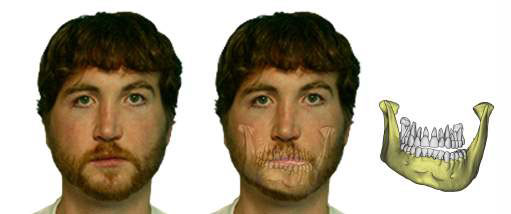
Marked facial asymmetry can result from genetically inherited, traumatic, or developmental disorders. These are often complicated treatment challenges, and additional surgical procedures may be required to achieve ideal facial symmetry.
There are usually severe bite disturbances in people affected by such conditions. Jaw joint issues are also a common complaint in patients with such extreme jaw and facial asymmetry.
Thorough investigation of the underlying cause is essential for precise treatment planning, with the use of detailed medical imaging being helpful for making an objective diagnosis.
Jaw Surgery Procedures
Visualize your jaw, face and smile in the optimal position (structurally, functionally and esthetically) using proprietary state of the art 3-D soft imaging at Jaw Surgery LA.
Visualize individualized treatment options.
Schedule an initial consultation in our office or via teleconference for patients flying in from out of state or abroad.
Le Fort I
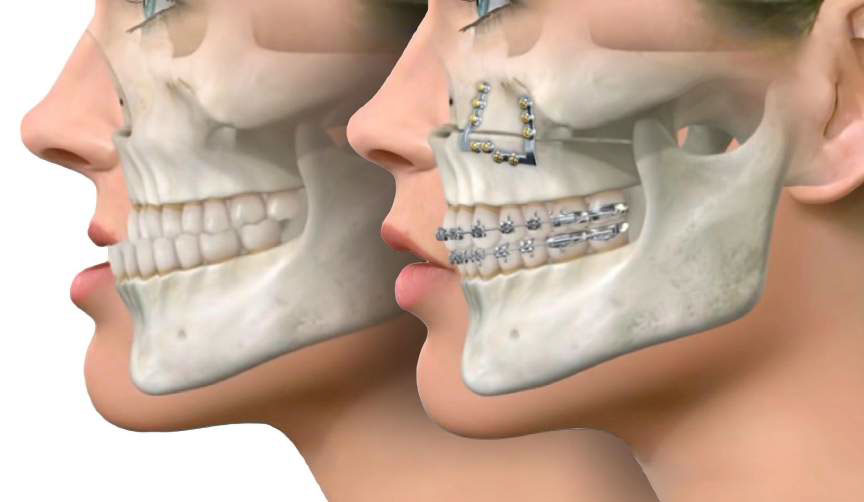
Le Fort I is used to correct mid-face abnormalities. Aesthetically, a Le Fort advancement harmonizes facial balance by correcting the sunken or setback appearance of a small upper jaw, and also improving the fullness of the upper lip.
The upper jaw can be moved forward to correct an underbite, or lifted up to correct an open bite or gummy smile. Balance to your facial profile is provided through increased projection of your cheekbones and upper lip.
Advancing the upper jaw improves the flow of air through your nasal airway and behind your soft palate. If planned and treated in a precise fashion, the surgery is capable of completely eliminating nasal airway obstruction.
Bilateral Sagittal Split Osteotomy (BSSO)
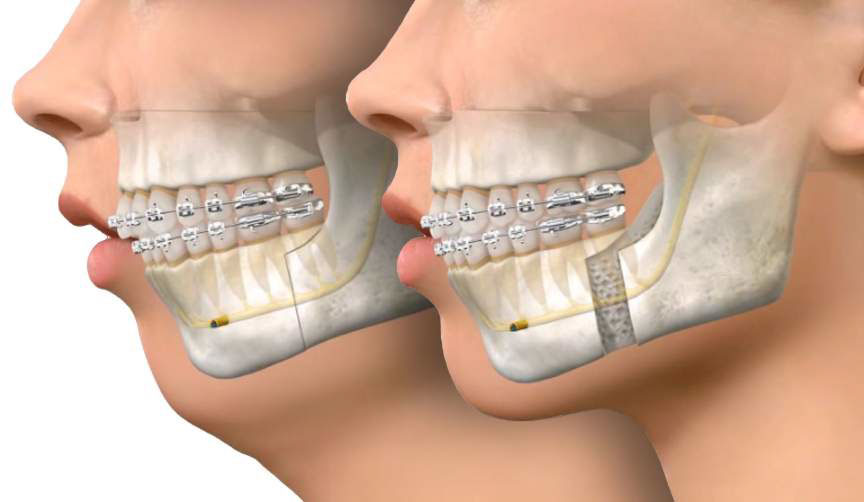
Bilateral Sagittal Split Osteotomy (BSSO) corrects the length and position of the lower jaw. Your lower jaw is moved forward to correct an overbite, improving how your teeth come together when chewing, as well as opening up the airway behind the tongue.
The BSSO usually requires a lengthy period of orthodontics, both leading up to surgery as well as after the procedure. There are limits to a successful BSSO advancement of around 6-8mm.
Too great a movement and the pull-back forces from the tongue and skin lead to an unstable bite and the potential for “relapse”. Pulling back your lower jaw with a “BSSO setback” obstructs your airway, and should never be considered as a treatment option.
BiMax
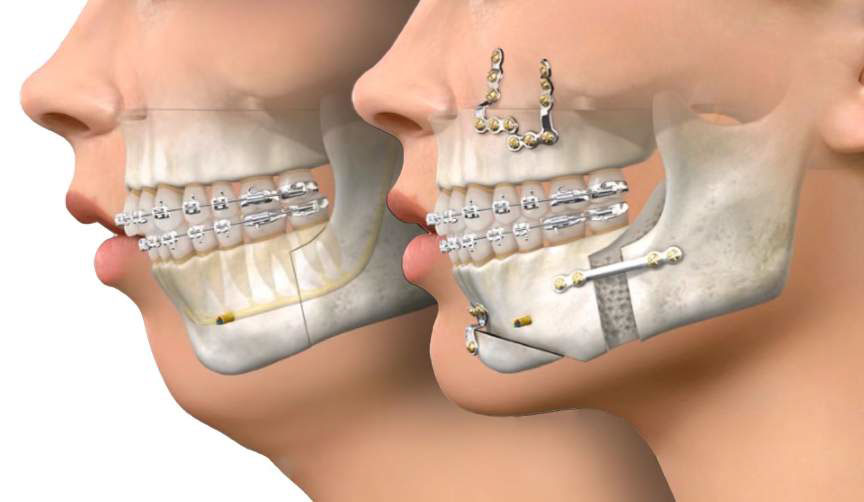
BiMax surgery advances and corrects the position of both jaws, combining the BSSO and Le Fort I in one operation. Correcting your jaw relationship balances how your teeth meet when eating, and minimizes the risk of tooth wear and jaw joint issues.
BiMax surgery is often used to alleviate airway obstructions that lead to snoring, sleep apnea, and poor exercise tolerance. Advancing both jaws together opens your airway substantially, improving the natural flow of air when breathing.
Your smile and facial appearance will be enhanced, through idealizing the amount of teeth you show when talking and smiling, and by accentuating the definition of your cheekbones, jawline and facial profile.
Genioplasty and GenioPaully
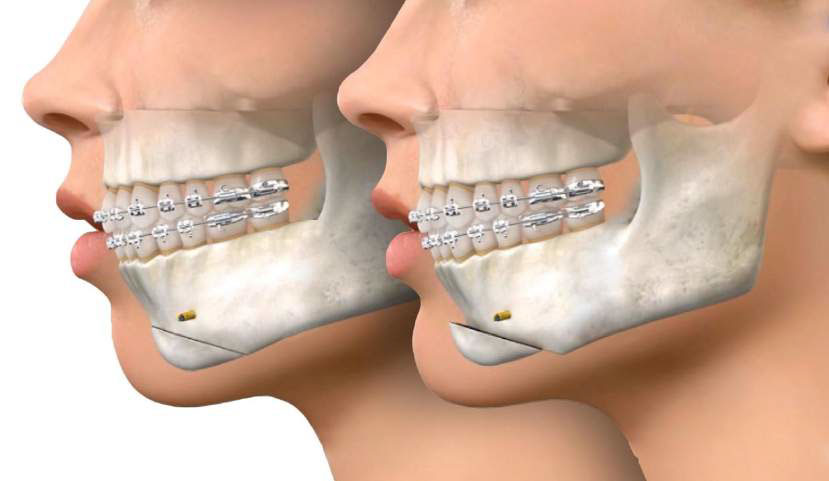
Genioplasty is a procedure used to correct how far forward the chin projects. It is used to correct the symmetry of the chin point, and the contour and shape of the chin. A Genioplasty is often performed as part of a sequence of surgical jaw procedures.
GenioPaully is an enhanced variation of the Genioplasty. Used together with the advancement BSSO, it maximizes chin, jawline and profile aesthetics while providing significant pull on the back of your tongue to open your airway further.
Surgically Assisted Rapid Maxillary Expansion (SARME)
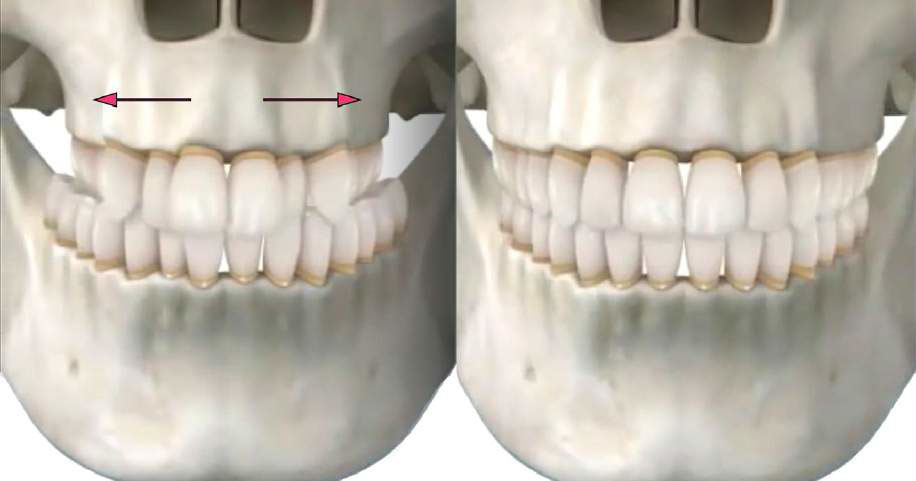
SARME is used to widen a narrow upper jaw in adults, or late teenagers for whom facial growth has ceased. It is usually performed prior to BiMax surgery in adult jaw surgery patients. SARME creates the room in the upper jaw to allow your teeth to be straightened without the need for tooth removal. It also opens your nasal airway to your breathing and reduces the severity of possible snoring or sleep apnea.
Counter Clockwise Rotation (CCW)
CCW is a variation of the BiMax surgical procedure. CCW stands for “Counter Clockwise rotation” and refers to the effect of moving the upper and lower jaws forward while also rotating them upwards.
“Camouflage orthodontics” relies on pulling the upper teeth back and dental extractions. This steepens the lower jaw angle, often producing a “gummy smile” from the increase in facial height. Airways are usually restricted from the downward growth of the mandible.
CCW reverses the effect of the original orthodontics used to disguise a small lower jaw. The CCW is the most commonly requested remedial jaw surgery procedure by adults, seeking to reverse the negative effects of camouflage orthodontic treatment.
The CCW is a form of BiMax. The amount of CCW and advancement required is determined during the surgical planning. The CCW is often combined with an advancement Genioplasty, and the effects on both profile and airway opening can be substantial.
